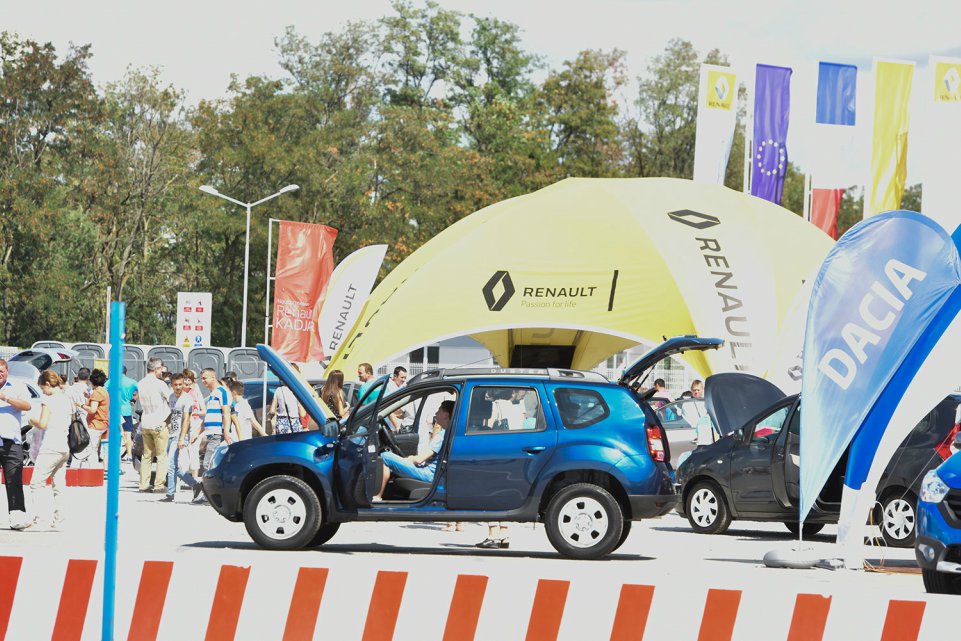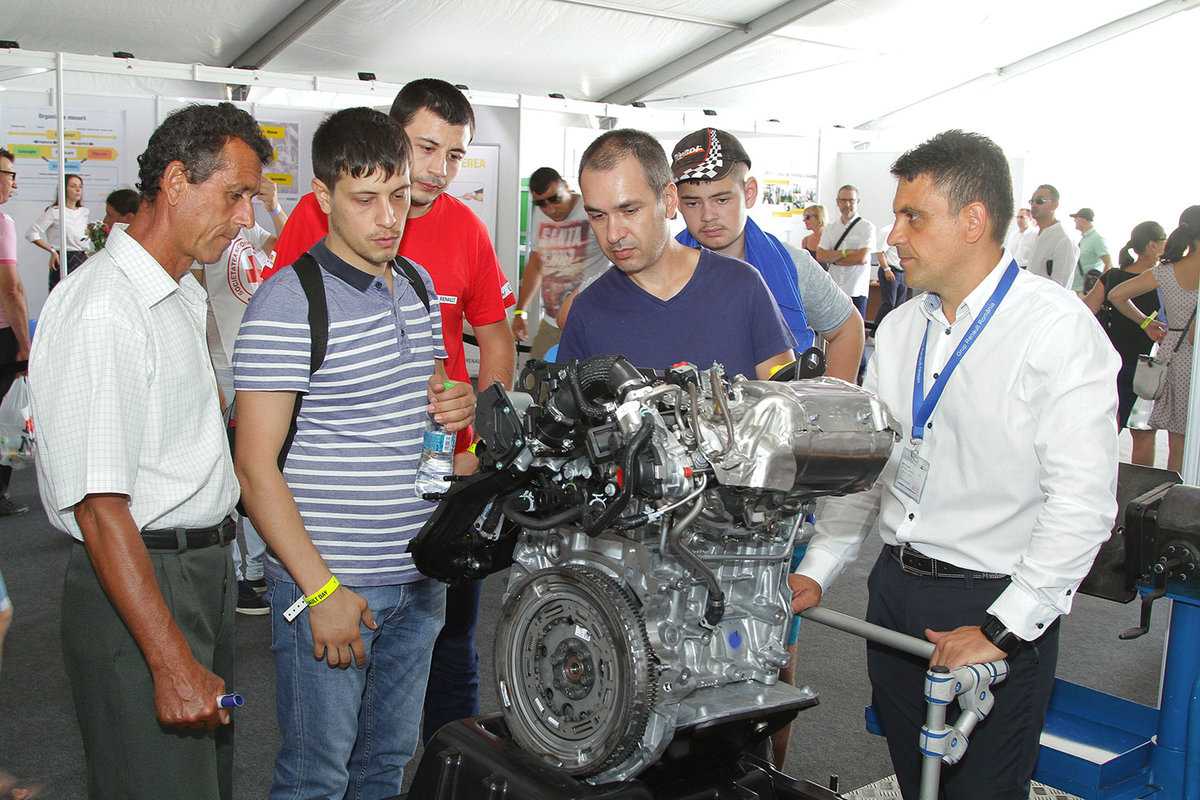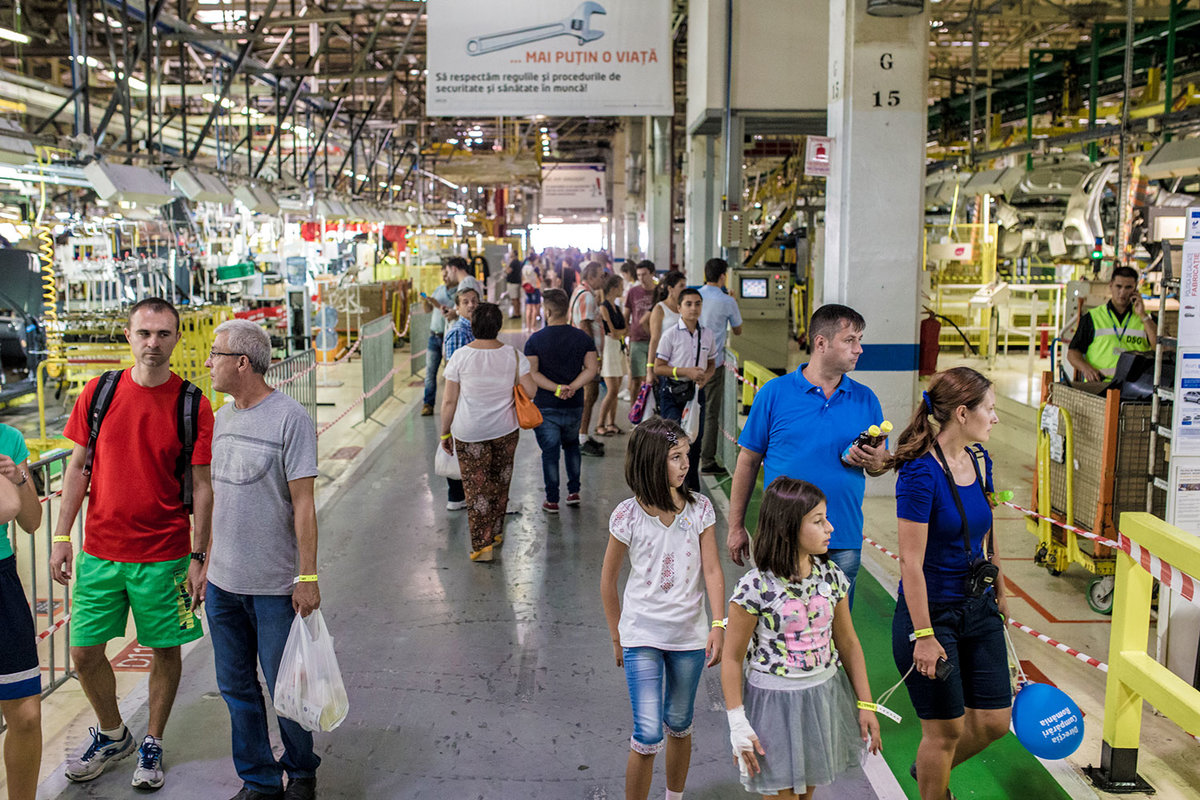Dragoș Prodan, a smiling 28-year-old, is sitting in front of a huge computer monitor as hundreds and hundreds of people pass by, looking at the car designs he rotates and adjusts on the screen. Most stop and listen to the explanations of his colleagues, but it’s the children – and especially the boys – who are unable to take their eyes off the fantastic 3D car models on Prodan’s screen.
It’s Sunday, September 6, and Mioveni, the Romanian town where Dacia is built, is all about one event: Renault Day, that day of the year when the car manufacturer’s employees are invited to bring their home families to meet their work family.
The 5,000 people event features concerts, factory tours, sports competitions, an in-house car show, and a fair where all main departments showcase their work. There is a technological robot here, trained to draw visitors’ portraits, there is the logistics department boasting the 2.6 million vehicles delivered in the last 11 years, and there is the design department pointing out the development stages of a new car model.
Prodan is a 3D modeler – his role comes right after the designers’ and just before the engineers step in. He works in downtown Bucharest, along with 30 Romanians, Bulgarians, Ukrainians and French, in Renault’s only design studio in Eastern Europe. He worked on the shape of the Renault Kadjar, the newest creation of the design studio placed at the crossroad of Pitar Moș and Arthur Verona streets. His screen shows a 3D render of a new Dacia model, but when he really wants to impress the boys at the fair, he shows the film with the Alpine Gran Turismo, a futuristic sporty concept not likely to ever go into production.
Andrei Băjenaru (34) is a team leader in the market research department and he specializes in competition analysis. His department is also present at the fair, occupying the last spot under the huge white tent. He studied Automotive Engineering, and then PR, and has been working in the Renault Group since 2007. His department is working to understand market specifics (needed early in the product development stages), and client reactions (after a product is released), and adapt to them. They study traditions and trends in different countries and gather feedback in order to develop product strategies and help the design department. His work includes going to auto shows and studying the competitors and he knows that China is becoming an important market for the Renault Group, and that some countries – such as Romania – require sturdier car suspensions.
The sports hall of the Car Manufacturing Technical Highschool in Mioveni, where most of the sporting events of the day take place, is all blue: blue floor, 14 blue tennis tables and teenage referees in blue t-shirts. Mihai Casapopol (50) is playing ping pong with his daughter Eliza at one of the events, as they did last year, at Titu, when the first edition of the event took place. He has been working at Dacia since 1989 and is now in charge of a department in the chassis section where his team produces vehicle axles. Eliza, who is a Math student at Oxford in her second year, also attended an aerobics event, and both of them did drive tests: Eliza drove a Duster, and he tried the new Nissan Pulsar (Nissan, Dacia and Renault are all brands of the group). Casapopol, who lives in Mioveni with his wife (and their daughter during school breaks), is also excited about his visit to the Assembly section, planned for the afternoon.
Prodan, Băjenaru and Casapopol are all members of the same extended family. Nicolas Maure, the President – General Manager of Dacia, explained it so: Renault Day is an opportunity to gather employees and their loved ones together, under one family spirit.
Part of a series dedicated to the supporters who help make the conference possible. We thank them for their contribution. This year, we’ll take some our speakers on the road, from Bucharest to Cluj, in cars provided by Dacia.


